No, not the better-known Speak & Spell. TI’s 1981 Touch & Tell was a singular moment in speech synthesis. Here’s its story – and a beautiful circuit bent mod.
Before the iPad, the Texas Instruments Touch & Tell was a kid’s robotic learning assistant – a marvel of simple chip-based electronics combined with some Reagan-era toy design and mechanical engineering. As was the fad in home game systems, you added capabilities by popping in cartridges.
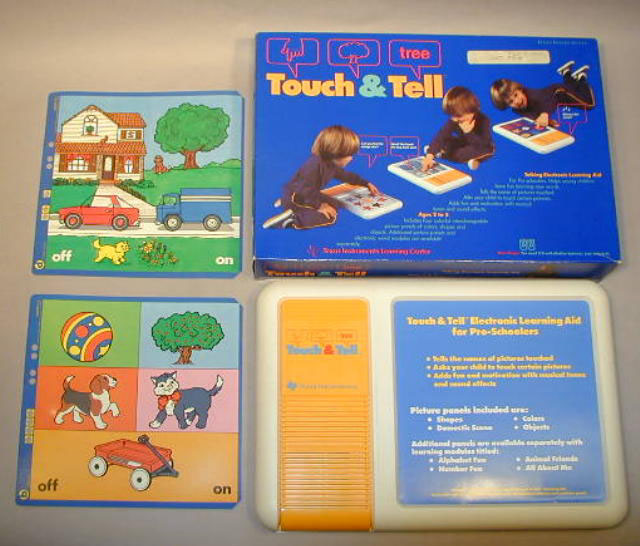
https://www.youtube.com/watch?v=qiPQnuUgFJI
The Smithsonian in Washington, DC found it important enough to put the Touch & Tell in its collections. And yes, gasp – the Smithsonian has a chip collection. (Sorry, there’s a link hole to destroy productivity for the rest of today.)
http://smithsonianchips.si.edu/texas/t_453.htm
I spoke with Ivo Ivanov, who had for some years made gorgeous custom modifications of this and other 80s classics. He was giving them slick futuristic paint jobs and useful, expressive circuit bend controls for transforming and glitching out the sound.
He shares more tidbits about these gems:
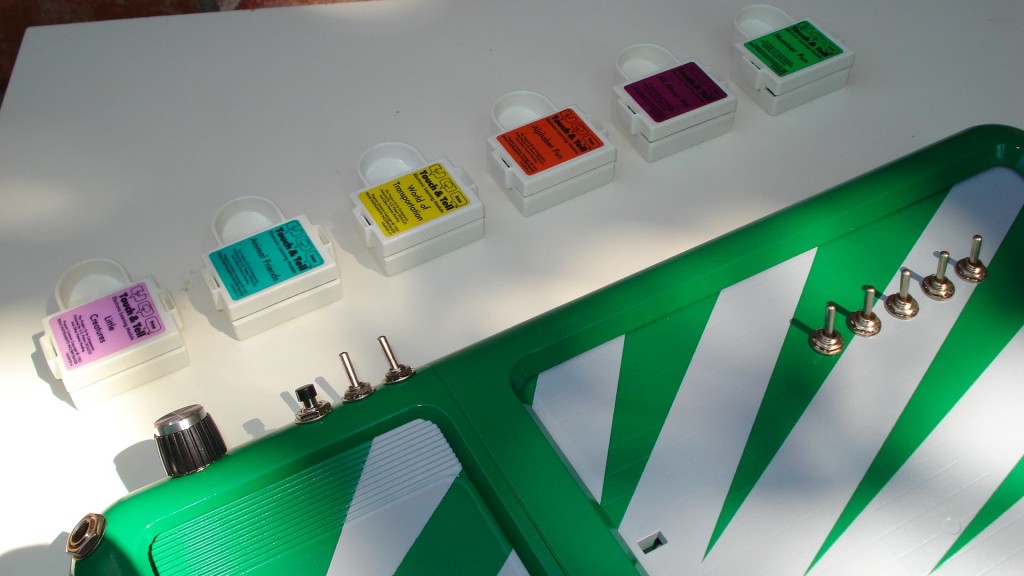
Cartridges pose with one of Ivo’s mods.
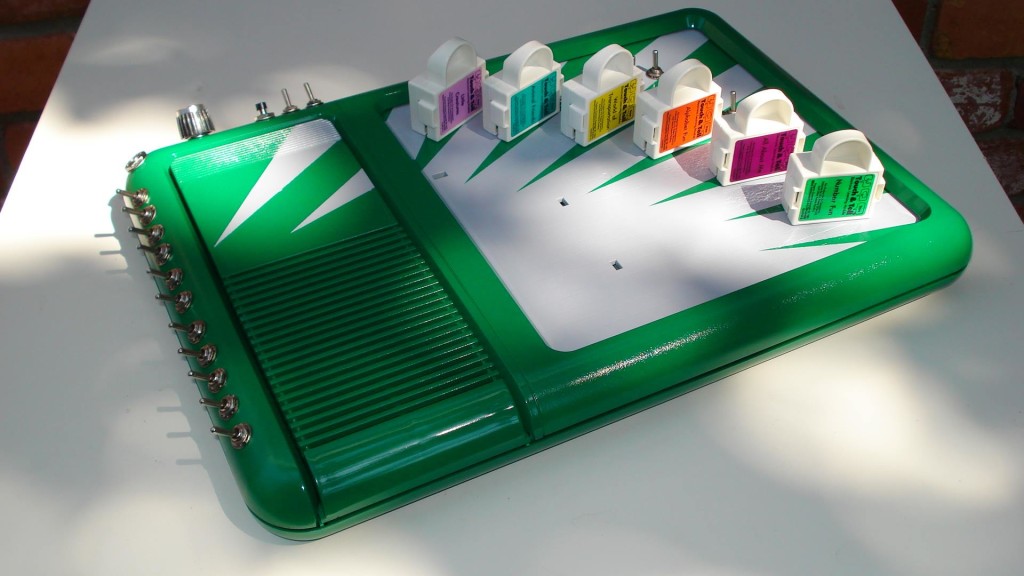
Yes, the little cartridges are basically vocabulary add-on carts. They each have a specific theme, with words and phrases that pertain to the theme. My favorite is the “World of Transportation” (yellow cart) which talks a lot about space, planets, satellites etc. ?
There is even a ULTRA rare ET cart that has words and phrases from the ET movie – very hard to find, but very very cool.
OH and there’s even a version of this toy that was made for disabled people – it’s called the Vocaid:
http://www.datamath.org/Speech/Vocaid.htm
The Vocaid has all kinds of “emergency” and “medical” words and phrases which, when bent, are super diabolical haha.
Anyway the cartridges are inserted into the device in a slot that lies under that panel on the left of the unit. Normally, you would need to insert a thin plastic overlay that matches the cartridge – this would activate the pins that give you access to the particular bank in question. I decided to modify that and completely removed the membrane pad so that I could wire up my own bank switches (top row of switches on the face of unit). This way, the user can basically select any bank of words/phrases without having any of the inserts. Much cleaner and more convenient way to access to all possible banks.
Last bit of info on these: the TI Touch & Tell uses a slightly different chip than the Speak & X family of toys. This one sounds deeper and more menacing, which is why I always preferred them. They are also lesser known, which made them a bit cheaper and easier to find.
And they have a nice open flat surface, which was perfect for my painted designs.
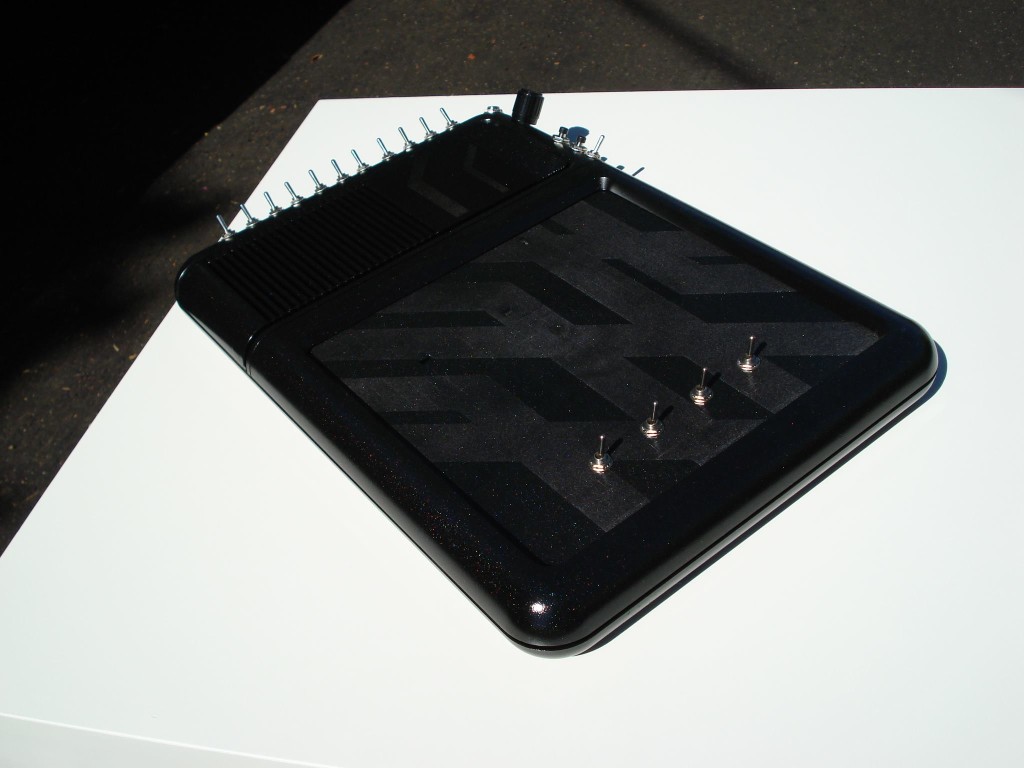
A slick, sexy all-black mod from Ivo.
Circuit bent instruments by Ivo Ivanov [Facebook]
Datamath has a nice view of the chips inside:
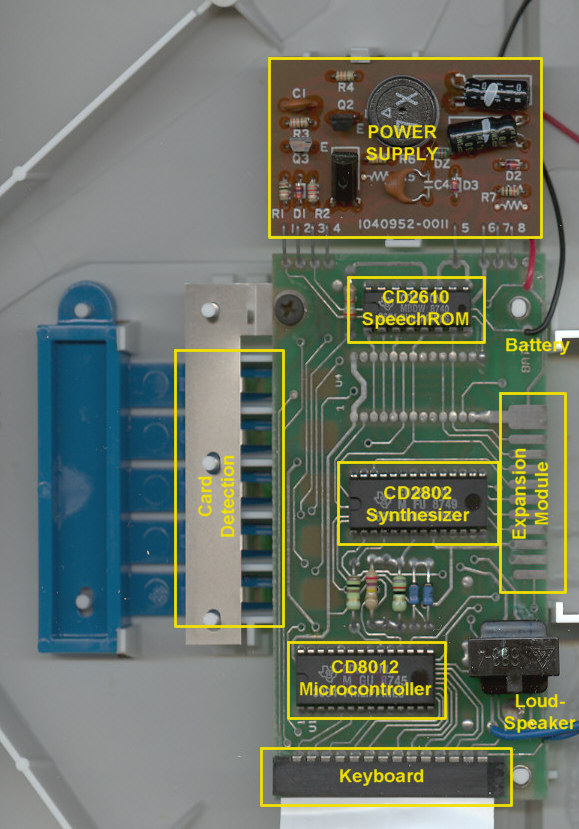
Reed Ghazala, father of circuit bending, personally designed the modifications of this instrument. What I find so lovely about them is that they deconstruct the voice synthesis in such a way that it really does begin to sound like an instrument – not just a special effect, but some weird, alien approach to producing noise.
Here’s a 2007 video by John Madere employing Reed’s bends:
And here are some other benders modding the VOCAID:
HELP! FIRE! EMERGENCY! EMERGENCY!
Yeah, fits the times reasonably well…
To check out these sorts of sounds in software, look no further than Plogue’s amazing plug-in:
